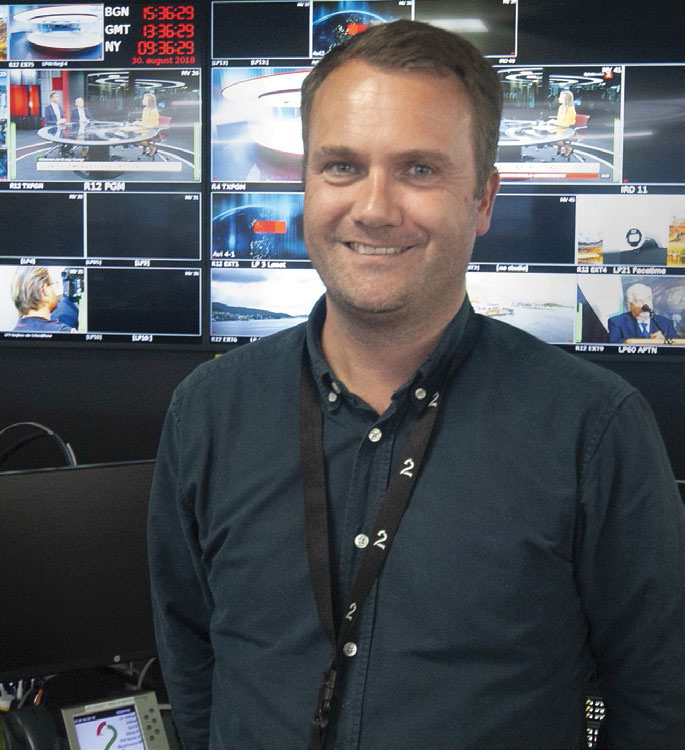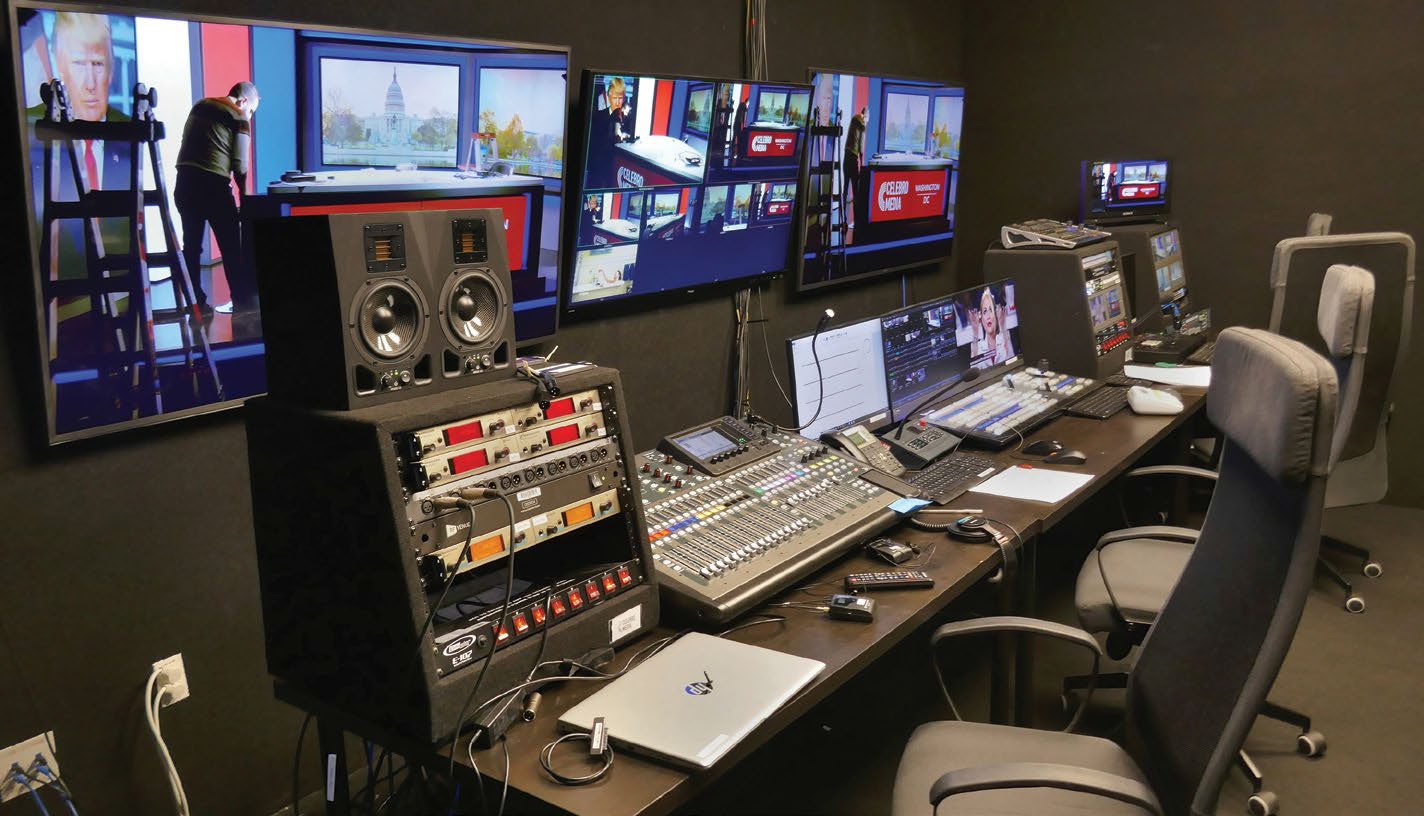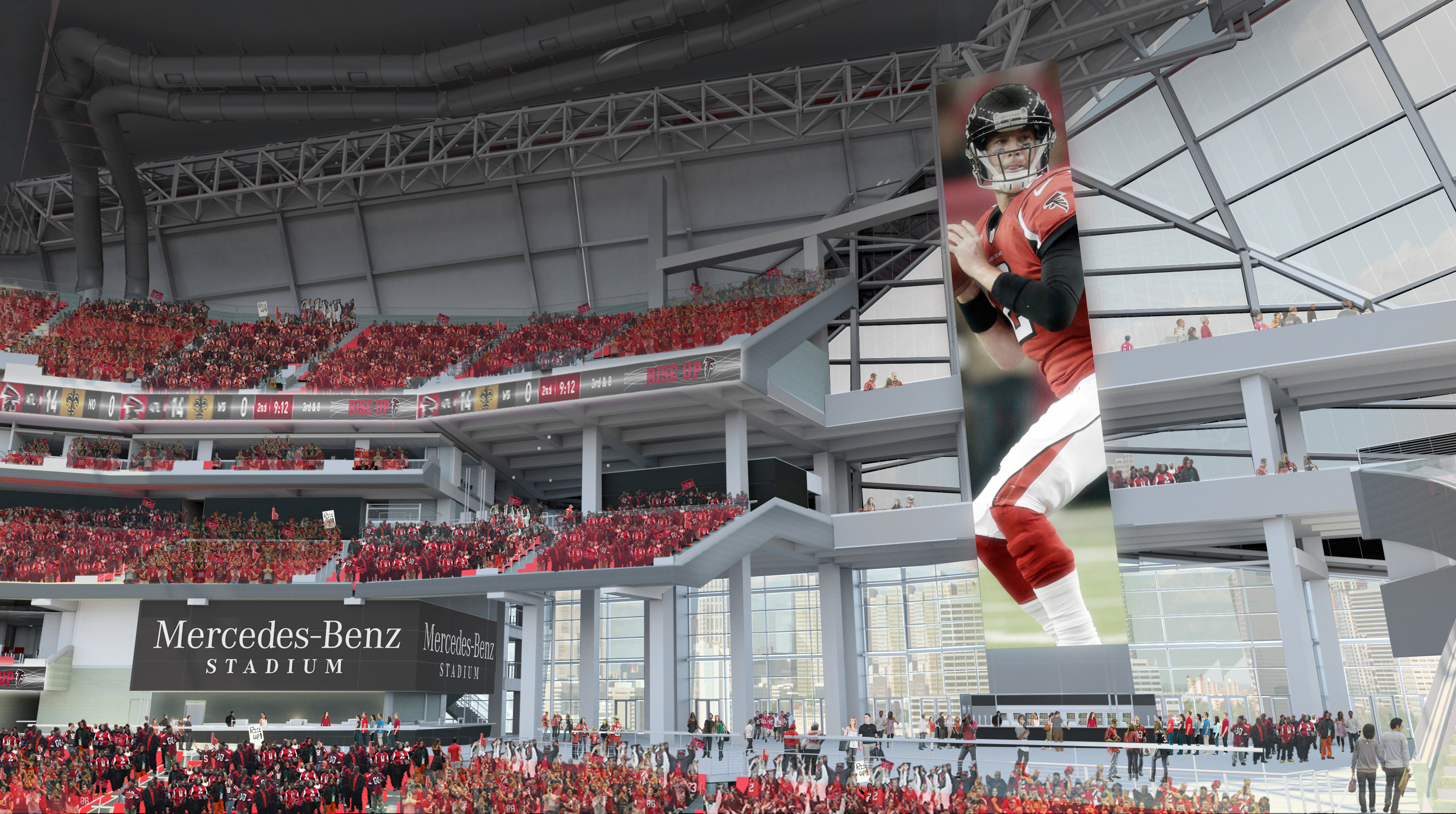How IP Architecture Works for Live Production
ALEXANDRIA, VA.—The old saw is that if you build a better mousetrap, buyers will beat a path to your door. The question of the day is whether IP infrastructure is a better mousetrap for video production when compared to a traditional SDI infrastructure.
The answer seems to be that IP is better for video infrastructure, with the catch being that not everything plays well together—yet. Although there is a SMPTE standard for the transport of IP video (ST 2110) and this is excellent for interoperability, there is a bit of a learning curve and an adjustment period to get all the gear humming the way it should.
That said, there are many benefits to going the IP route for your in-house infrastructure and distribution. A big advantage is flexibility—SDI is a point-to-point one-way system, and IP is bidirectional and can carry multiple uncompressed signals at the same time. A notable future advantage may be lower installation costs, but that’s not necessarily the case today.

“I would say that at current time, an IP-based system is more expensive than an SDI system,” said Svein Henning Skaga, project manager for TV 2 Norway, the country’s largest commercial broadcaster. “We need to do a lot of training since this is new technology, and we need a lot of services from our vendors. But in the long run, we expect it to have lower costs as changes and expansion are less complex.”
Skaga said that the production staff does not see much difference in how operations are conducted, as their systems are much the same as before.
However, for operations and support there is a big change, he said. “They now need to relate to computer network equipment and new [IP] technology.”
The TV2 Norway system relies significantly on Lawo production gear, and the bottom line for Skaga is how well the system runs.
“For a traditional broadcast guy like myself, I was concerned about the stability,” he said. “The IP system has been very stable, and we have full control over all our audio-and video streams.”
When building an IP-based system, Skaga recommends putting a lot of effort into designing the network infrastructure. Getting this right from the start will save you from a lot of trouble, he said, but don’t be surprised if you still have work to do.
“Physical installation was rather quick,” he said, “but configuration took a long time.”

NEW STUDIO USING IP
Celebro Media, a Washington-based studio facility that caters to international broadcasters, recently built a new studio facility using IP technology. At the heart of it is a NewTek production switcher connected throughout the facility using NewTek’s Network Device Interface technology, an IP-based solution that NewTek has shared with many other companies.
“We identified very early on that we needed to go down the IP route,” said Stephen Gaisford, director of US operations for Celebro Media. “We have a studio on the 10th floor and live positions overlooking the White House. Traditionally, broadcasters would be running SDI cables from source to destination all over the building, and we knew that wasn’t practical. We considered New-Tek’s NDI solution as a way to make every source a destination with its two-way connectivity. Everything connected in the in/out module in our rack room is a source that is available to us on our TriCaster switcher in the main studio control room.”

Gaisford pointed out that the NewTek production switcher has only four SDI inputs, and he has four studio cameras plus a host of other inputs—including international remote feeds.
“The flexibility that NDI gives us means that we can have a limitless amount of sources at our disposal,” he said. “We’re future-proofed by going down the Ethernet RJ45 route.”
Celebro’s system was not quite plug-and-play, and Gaisford echoed a thought that many television engineers share.
“Something that broadcasters have to bear in mind going forward is that your engineers are not just going to be television broadcast engineers—they need to have knowledge of computer networks,” he said. “The single biggest issue that we faced getting the bits of kit to talk to each other was making sure that firewalls weren’t stopping one item from talking to another. That’s something that we’ve only resolved quite recently.”
MERCEDES-BENZ STADIUM
The engineering staff at Mercedes-Benz Stadium, home of the NFL’s Atlanta Falcons, recently installed an IP-based video system from Ross Video that is used on game day to source and distribute signals used for broadcasts and in-park video.

One of the decisions was what speed to make the IP network.
“With a 10GbE network, you can send more signals—up to three 3G signals down on path,” said Ben Dolinky, a video engineer for AMB Sports + Entertainment, which operates the video systems at the stadium. “We couldn’t do that with an uncompressed HD-SDI signal.”
Dolinky had one operational note regarding an IP video system, as compared to a traditional SDI-based system: “It goes without saying, but in an IP facility it is very important to keep your server room as clean and dust-free as possible,” he said. “With an IP facility, there is more fiber cleaning and maintenance compared to an SDI facility.”
DAILY BLAST LIVE
To promote the second season of its syndicated daytime programming, Daily Blast Live (DBL), broadcast station group TEGNA conducted a live, point-to-point “media tour” from its KUSA Denver studio to 32 stations across the country. For six straight hours on one day, Daily Blast Live sent 32 different live shots about every 10 minutes featuring DBL talent to TEGNA morning and noon shows.

The number of shots, the total length of time, and the varying time zones that had to be accommodated made purchasing satellite time too cost-prohibitive, so TEGNA turned to TVU Grid, an IP-based switching, routing and distribution system from TVU Networks, to receive DBL media tour audio and video.
Each local TEGNA station receiving DBL media tour audio and media routed the signals through their own control rooms to air. Sharon Levy, DBL technical operations manager, received programming from each station via TVU Grid, using it as a confidence monitor and a source to record all DBL live shots that day. DBL anchors used IFB audio through the TVU Grid to have conversations with each of the stations.
“Distributing our feeds with TVU Grid required no additional fees,” Levy said. “We had the TVU infrastructure in place already, and the technology is nearly as clean [as satellite] now. None of the stations had any issue finding us. All our stations received our output on TVU Grid. I recorded each shot live and archived them all. It went very smoothly.”
HD OR 4K?
Where does 4K fit into the IP video production picture? Gaisford said that all productions so far at Celebro’s Washington studios have been in HD, although the facility can handle 4K origination. It looks like the inherent flexibility of IP makes it a logical choice for systems that have varying needs up to and including 4K.

“One of the big advantages of IP is being able to maximize resources,” said Robert Erickson, advanced technology director for Grass Valley. “Software-defined applications running on IP infrastructures can be quickly spun up and taken down rapidly, allowing more efficient resource management. With IP, projects can be allocated resources as needed and re-allocated somewhere else during downtime. Additionally, IP is completely format-agnostic, enabling broadcasters to quickly respond to new business opportunities.”
A variety of companies now manufacture a wide range of SMPTE ST2110-standard products for IP video production. In addition to those already mentioned, Sony, JVC, Panasonic, EVS and Blackmagic Design all have an array of products that fit into IP production workflows. One example is the Sony XVS-9000 live production switcher, which can be used for 4K and HD productions, and features high dynamic range (HDR) capability.
It is possible today to shoot live broadcast-quality programming using IP-connected equipment. Costs are competitive today with providing similar function using SDI architecture, with the added benefit that IP systems are both bidirectional and more flexible than SDI cabling.
Get the TV Tech Newsletter
The professional video industry's #1 source for news, trends and product and tech information. Sign up below.
Bob Kovacs is the former Technology Editor for TV Tech and editor of Government Video. He is a long-time video engineer and writer, who now works as a video producer for a government agency. In 2020, Kovacs won several awards as the editor and co-producer of the short film "Rendezvous."

